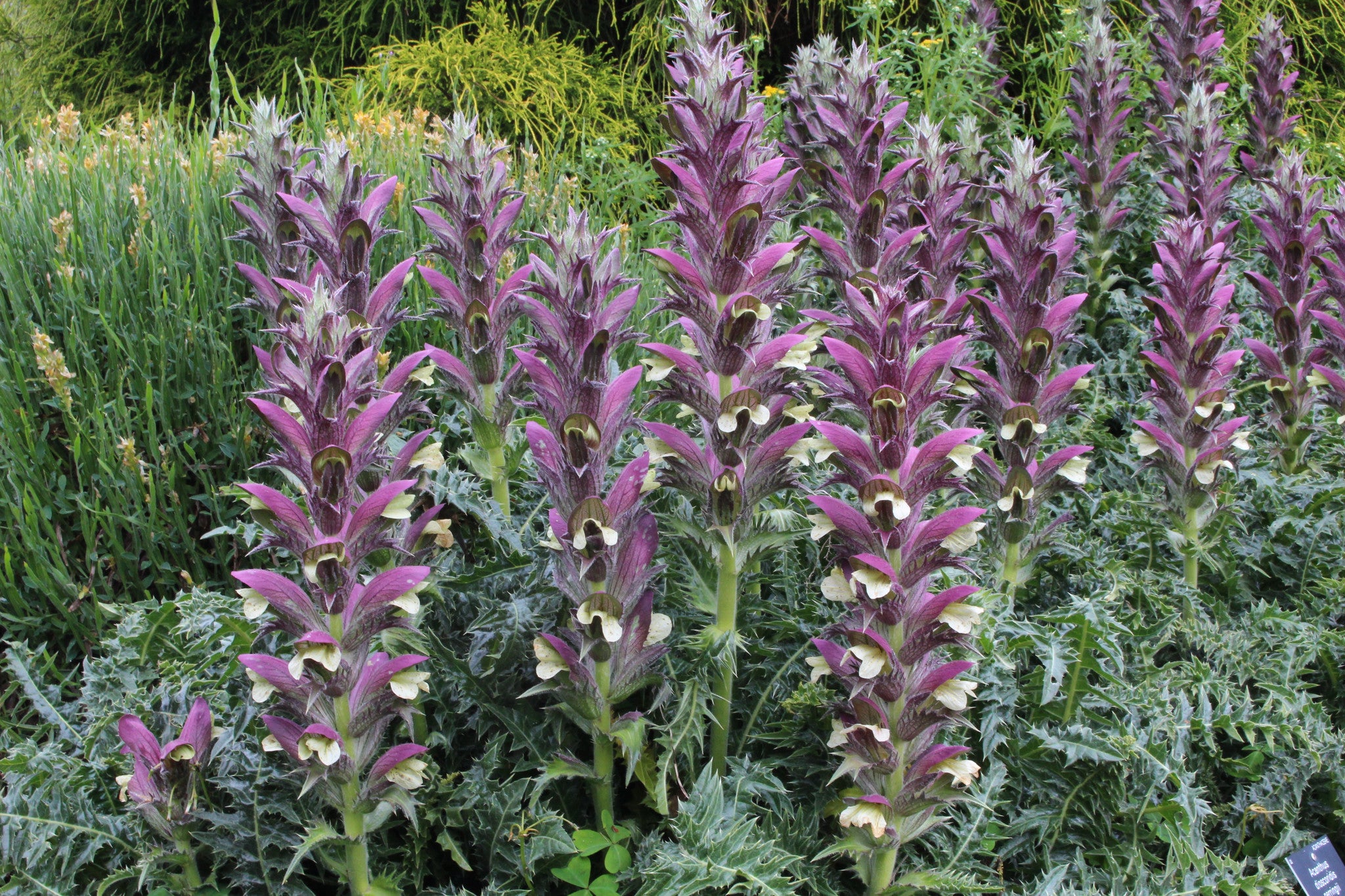Acanthus dioscoridis var. perringii
Approx. 0.5 litre pot
About this cultivar:
Acanthus dioscoridis var. perringii, commonly called Syrian Acanthus, was already described and the name validly published by Walter Siehe (1859-1928), a German plantsman that lived in Turkey. It was A.B.M.Enayet Hossain, however, who reclassified it into todays valid botanical systematics in 1982. As a North African species it likes more heat and is more refined that the usual Acanthus. It is also smaller with low, finely cut, thistle-like foliage. The flower spikes have a wonderfully unusual, yet beautiful, yellow and lavender combination. Like all Acanthus, this will spread by suckering rhizomes, but it will be a slow grower than the others.
- Position: Full sun, partial shade
- Soil: Almost any soil - grows well in Ballyrobert!
- Flowers: May, June, July, August, September
- Other features: -
- Hardiness: H6 - Hardy in all of UK and northern Europe (-20 to -15°C), Fully hardy - grows well in Ballyrobert!
- Habit: Columnar or Upright
- Foliage: Deciduous
- Height: 45 - 75 cm (1.5 - 2.5 ft)
- Spread: 45 - 75 cm (1.5 - 2.5 ft)
- Time to full growth: 5 to 10 years
- Plant type: Herbaceous Perennial
- Colour: White, purple, green, yellow
- Goes well with: Veronicastrum virginicum f. 'roseum Pink Glow' (see photo)
About this genus:
Acanthus, commonly known as bear’s breeches, is a clump-forming perennial that we grown as much for its attractive foliage as for its architecturally bold creamy white flower spikes with red-to-purple bracts. Acanthus leaves have a classical appearance and were the source of the Corinthian leaf motif developed and used as a decoration in ancient Greek and Roman art and architecture.
At Ballyrobert we find Acanthus a versatile plant - its classic feel and architectural habit makes it at home in the more formal parts of our garden yet its health, vigour and large size make it at home in more informal areas close to hedges, the backs of borders, and woodland. During winter, if not cut back, Acanthus can provide a fine silhouette.
Acanthus mollis is very similar to Acanthus spinosus. The main differences between the species being the leaves and flowers: spinosus tends to produce more flower spikes but its leaves are less broad and less soft than mollis.


